Yes, I did. I got a cute picture of my granddaughters, and one of the older ones was inadvertently (I'm hoping), showing a little more cleavage than Old Grandma thought necessary. Ten minutes with Photoshop and things are good, at least from my perspective. If I was a little better skilled with the program, it wouldn't have taken me that long, but who cares? In the end, I did what a grandma needs to do.
As I was working, I thought about my own grandmother, Lill. She was the original Photoshop Master, and she never went anywhere near a computer. Her method of choice was Contact Paper. Remember that stuff? That wonderful-but-cheesy sticky paper that you could use inside your kitchen cabinets and drawers, on tabletops, or wherever you needed a quick and cheap "makeover." What a feeling of success when installation went smoothly, and whatever you were sticking it to was totally transformed... and what a feeling of exasperation if you weren't careful and the adhesive side stuck to something it wasn't meant to.
Grandma took Contact Paper a step further. Sitting in her living room one afternoon, I saw a new picture of my cousin and her little boy hanging on the wall. The background was lovely - daisies! I remarked about what a nice picture it was, and she had me look at it closer. The daisies were covering my cousin's ex-boyfriend! Grandma had painstakingly cut out these flowers from Contact Paper and strategically placed them, and the result was actually good! Looking closer at the other photos on the wall, I noticed another where the divorced spouse had been "flowered-over." This phrase became a part of our family's legacy, as spouses were jokingly threatened with being flowered-over from that point on.
I kind of shudder when I think about what Grandma might have done with a computer and Photoshop. Ex-husbands and wives would be gone from the family photos in a millisecond; that grandson with the long, shaggy hair would gotten a respectable haircut; eye makeup would have been toned down.
And I take comfort in the fact that none of *her* granddaughters would have sported any cleavage either.

Friday, June 27, 2014
Friday, May 2, 2014
James Callender Adams
James Callender Adams was born 14 April 1735 (or 1737), the son of James H. Adams and his wife Sarah Callender
Prior to his marriage in 1762, he lived in Stillwater, Saratoga co., New York.
He married Submit Purchase, daughter of Jonathan Purchase and Margaret Worthington, on 27 Jan 1762 in Springfield, Hampden co., Massachusetts. Submit was born 22 Jan 1735 in Connecticut.
Between 1783 and 1786, James and Submit moved their family to St. Johnsbury, Caledonia co., Vermont, being the first settlers in that area. They loaded their boats at Springfield, Massachusetts. These boats had rafters covered with canvas and blankets to protect their belongs, which included their furniture, a large clock, a spinning wheel and loom, chests of their bedding, clothing, and provisions for the trip. They rowed upstream on the Connecicut river, to the Passumpsic River, then to the West Branch, where they stopped, thinking they were at Littleton, New Hampshire, their intended destination. They decided to stay, settling on "Benton's Meadow". His father James, and brothers Jonathan and Martin also were granted land there. It is said that they were going to Littleton because James won land in Littleton in a singing contest. The song he sang was "Brave Wolfe", written by his son Jonathan. A descendant is said to own a copy of this song in it's original handwriting.
Another descendant states that the family went from Massachusetts to Tinmouth, Vermont about 1774, when sons James, Martin and Jonathan were in the Revolutionary War, and afterwards were granted land rights in Littleton township. While Martin's Revolutionary War pension file does not mention land grants, it should be noted that he entered the service from Tinmouth and mentions his father's home there.
They built the first home, made of logs, using a mud/twig mixture for caulk, and a pine bough roof. Oiled paper covered the windows. They slept on beds of pine and spruce boughs, and bear skins provided rugs for the floor.
Not surprisingly, they also were responsible for holding the first religious services, which was their evening worship around the fire, Bible-reading, praying, and singing hymns.
Submit Adams was noted as being the first woman to keep house within the bounds of that township.
James' house in St. Johnsbury burned at some point, destroying son Martin's Revolutionary War discharge papers.
Submit died on 13 Nov 1797 at St. Johnsbury, at the age of 62. She was buried at Adams-Babcock cemetery in Waterford, Vermont. James then married Mrs. Trescott. James died in 1813 in Newport, Orleans co., Vermont, at the age of 78. He was buried on his farm in St. Johnsbury, Caledonia co., Vermont.
James and Submit Adams had six children: Martin, Jonathan, Thirza, Clarissa "Polly", James Callender, and Charles.
Prior to his marriage in 1762, he lived in Stillwater, Saratoga co., New York.
He married Submit Purchase, daughter of Jonathan Purchase and Margaret Worthington, on 27 Jan 1762 in Springfield, Hampden co., Massachusetts. Submit was born 22 Jan 1735 in Connecticut.
Between 1783 and 1786, James and Submit moved their family to St. Johnsbury, Caledonia co., Vermont, being the first settlers in that area. They loaded their boats at Springfield, Massachusetts. These boats had rafters covered with canvas and blankets to protect their belongs, which included their furniture, a large clock, a spinning wheel and loom, chests of their bedding, clothing, and provisions for the trip. They rowed upstream on the Connecicut river, to the Passumpsic River, then to the West Branch, where they stopped, thinking they were at Littleton, New Hampshire, their intended destination. They decided to stay, settling on "Benton's Meadow". His father James, and brothers Jonathan and Martin also were granted land there. It is said that they were going to Littleton because James won land in Littleton in a singing contest. The song he sang was "Brave Wolfe", written by his son Jonathan. A descendant is said to own a copy of this song in it's original handwriting.
Another descendant states that the family went from Massachusetts to Tinmouth, Vermont about 1774, when sons James, Martin and Jonathan were in the Revolutionary War, and afterwards were granted land rights in Littleton township. While Martin's Revolutionary War pension file does not mention land grants, it should be noted that he entered the service from Tinmouth and mentions his father's home there.
They built the first home, made of logs, using a mud/twig mixture for caulk, and a pine bough roof. Oiled paper covered the windows. They slept on beds of pine and spruce boughs, and bear skins provided rugs for the floor.
Not surprisingly, they also were responsible for holding the first religious services, which was their evening worship around the fire, Bible-reading, praying, and singing hymns.
Submit Adams was noted as being the first woman to keep house within the bounds of that township.
James' house in St. Johnsbury burned at some point, destroying son Martin's Revolutionary War discharge papers.
Submit died on 13 Nov 1797 at St. Johnsbury, at the age of 62. She was buried at Adams-Babcock cemetery in Waterford, Vermont. James then married Mrs. Trescott. James died in 1813 in Newport, Orleans co., Vermont, at the age of 78. He was buried on his farm in St. Johnsbury, Caledonia co., Vermont.
James and Submit Adams had six children: Martin, Jonathan, Thirza, Clarissa "Polly", James Callender, and Charles.
Tuesday, April 29, 2014
Hair Today, Gone Tomorrow
I love unique things – household décor items you won’t find anywhere else, unusual jewelry, one-of-a- kind picture frames, etc. So it only makes sense that ancestors with a distinctive look particularly pique my interest. On a recent expedition through my photo collection, I found a few of my kin that must have shared my penchant for distinction.
I love Albert Schultz’s big brush mustache…
And the hairdo on this unknown ancestor…
And Simon Ratcliff’s awesome sideburns…
And Marx Seemann’s big wave of hair…
Mabel Dickey’s little top-piece is particularly neat… and not easy to do, I'm guessing.
But my favorite of all of them, is Abial Adams.
This is the most distinctive beard I have ever seen. Kudos to Abial for not looking like every other man with a beard!
Saturday, April 19, 2014
Finding a Family for Joseph Nickeson
This blog post was inspired by Amy Johnson Crow 's "52 Ancestors in 52 Weeks" challenge. Learn more at her blog.
*******************************************
I was scooting along quite nicely with the Nickeson line until I hit Joseph, b. 1797 in either New York or Pennsylvania. I knew he married Margaret Coble in 1819 in Franklin county, Ohio, and between 1838 and 1840 had migrated to the Peoria county, Illinois area. But trying to find proof of his parents has been difficult.
Around the time of Joseph’s marriage, another Nickeson family resided in Franklin county – that of Aaron and Phebe Nickeson. Aaron died 1814, and his wife in 1842. Along the line, I was provided with a photocopy of a book, title unknown, which lists grave sites. Phebe Nickeson, “widow of Aaron,” is buried in Central Blendon cemetery, and there appears to be another grave south of this one that could be the unmarked grave of Aaron.
I began looking more closely at this couple, and found in some records they were “Nickerson” and in others, “Nickeson.” I contacted the Nickerson Family Association initially about ten years ago, inquiring of both Joseph, and Aaron and Phebe. It was felt by the chief researcher at that time that Joseph was indeed the soon of Aaron and Phebe, but no concrete proof had been found. Joseph, I was told, was probably born in New York, near the Pennsylvania border; Aaron and Phebe were in this area a the appropriate time. Also, one of Joseph’s sons was named Aaron. On this scanty basis, Joseph was tentatively placed in the family of Aaron and Phebe.
But now, having Joseph in Franklin county at the same time as Aaron and Phebe, I felt a little more comfortable with this assumption. I began looking at censuses, starting with 1800 in New York. I found an Aaron there with a female of the right age to be a wife, and 3 girls 10-26, and what looks like 3 boys under the age of 10. Joseph would have been 3 at that time.
Working backwards, I found an Aaron in 1790 in Albany county, New York; the family makeup appears to be the two parents, plus 3 daughters, consistent with what I found in 1800.
And this is the point where it quit being easy.
In 1810, there was no Aaron Nickeson or Nickerson to be found in New York. Ohio’s census records for this year were destroyed for all counties except Washington, and he wasn’t there either. He died in 1814, so I shifted the focus to his wife, Phebe. In 1820, the census is missing for Franklin county. In 1830, Ancestry.com does not list her in the census search results, and an attempt to browse the Franklin county census images was unsuccessful – Franklin county, for some reason, is not listed among the counties, although it was formed in 1803. I checked other Nickeson households in Ohio for the presence of a woman of the appropriate age, and did not find one; this, of course, does not rule out the possibility that she was living with a married daughter.
In 1840, there is an “A. Nickinson” in Franklin county, but no woman Phebe’s age in the household.
Turning to probate records, Aaron did leave a probate document, and I have a copy, but it is largely illegible. An abstraction in the Ohio Genealogical Quarterly lists the executors of his estate as Thomas McFeeley, John Brickle, and Uriah/Urri Nickerson. If this Nickerson is indeed Uriah/Urri, I have no idea who this Uriah is or how he connects, despite a tremendous amount of information from the Nickerson Family Association’s data. However – Aaron has a known brother, Uzziel, who lived in the same areas at Aaron, and was in Ohio by 1812 – two years before Aaron died. The signature at the bottom of the probate paper could have been “Urri”, or “Uzzi” in my opinion. The part of the paper that supposedly reads “Uriah” is equally as unconvincing. But unfortunately, regardless of who is the administrator, no other names appear on this document; it appears, from what I can make out, that it simply names the administrators.
I mentioned that Joseph moved his family to Illinois between 1838-1840, to an area in Peoria county near the Fulton county line. There is a Charles Nickerson in Fulton county, who moved there in 1837, from where I do not know. If Joseph is indeed the son of Aaron and Phebe, this Charles would be a very, very distant cousin, which opens up the possibility of Joseph perhaps being more closely related to this Charles than I’ve been thinking. Or, perhaps, it’s a coincidence that they ended up relocating to the same area at roughly the same time.
At any rate, as far as I can see, without some other clue to pursue I’m at the end of the line with Joseph, Aaron and Phebe Nickeson.
Saturday, April 12, 2014
William Lair and the “Lucky Thirteen”
This blog post was inspired by Amy Johnson Crow 's "52 Ancestors in 52 Weeks" challenge. Learn more at her blog.
*******************************************
On April 19, 1861, days after Abraham Lincoln called for men to defend the Union, thirteen men from Princeville, Illinois enlisted in Company A of the 2nd Illinois Light Artillery. One of those men was 19 year old William T. Lair.
These men were referred to as the “Lucky Thirteen” because all of them survived the war. In addition to William, his first cousin Noah Lair, and uncle Letz Lair, were also part of this group. While William did indeed live long enough to be mustered out, his service eventually resulted in his untimely death at age 35.
William initially enlisted for a period of 3 years; after his obligation was fulfilled, he enlisted for another 3 years as a veteran on January 1, 1864. He was described at that time as being 22 years old, with dark hair and gray eyes, and a light complexion. Later on that year, during a war campaign near Mobile, Alabama, he spent many hours in the water raising a dismantled gun that had been thrown overboard. Conditions were cold and damp; he slept in swamps during this period of his service, and it was this exposure, he felt, that resulted in the “lung disease” that would eventually take his life. After being mustered out, he returned to his home in Princeville, where he began a slow but steady decline to his death on April 05, 1877. He is buried at Princeville Cemetery.
Four years before his death, he married Susan Hammer Givens, widow of Jacob Givens. More about Susan’s story can be located here.
Saturday, April 5, 2014
My Granny’s Love for Her Granny
This blog post was inspired by Amy Johnson Crow 's "52 Ancestors in 52 Weeks" challenge. Learn more at her blog.
*******************************************
Saturday, March 29, 2014
Harriet Searle Van Brocklin - Doing God’s work on the Prairie
This blog post was inspired by Amy Johnson Crow 's "52 Ancestors in 52 Weeks" challenge. Learn more at her blog. This post was originally published in 2010, but since I can’t do better telling her story, I am re-publishing it for this series.
*******************************************
Van Brocklin's Day
On Yellow Creek they built a Church
And enemies said, "'twill be left in lurch,"
For the waters were high and the debt was large,
And God, they said, was against the charge.
And enemies said, "'twill be left in lurch,"
For the waters were high and the debt was large,
And God, they said, was against the charge.
But the day was bright and the sun shone clear,
And a pontoon bridge they crossed without fear;
And though the feet slipped the heart was true,
And they walked on ice to see the thing through.
And a pontoon bridge they crossed without fear;
And though the feet slipped the heart was true,
And they walked on ice to see the thing through.
The Elder preached well of Christ and love,
And carried our thoughts to temples above;
And when he stopped, Brother Best did write,
And soon the debt was out of sight.
And carried our thoughts to temples above;
And when he stopped, Brother Best did write,
And soon the debt was out of sight.
Yea, more than asked, with a hearty will,
Because our God their thoughts did fill;
And thanks to friends and God we'll give --
Praise here, and then go home to live.
Because our God their thoughts did fill;
And thanks to friends and God we'll give --
Praise here, and then go home to live.
May angels often come and see
Repentant sinners bend the knee,
And new-born souls begin the song
They sing in heaven's assembled throng.
Repentant sinners bend the knee,
And new-born souls begin the song
They sing in heaven's assembled throng.
--J. Wardie
Freeport, Feb. 20, 1883
Freeport, Feb. 20, 1883
Van Brocklin Church,~2009
Subscribe to:
Posts (Atom)
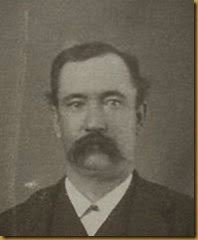
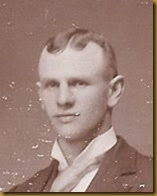

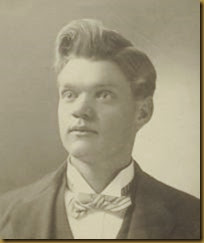
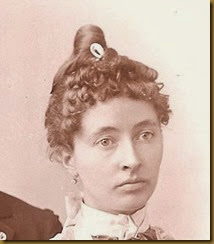
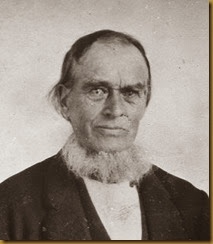
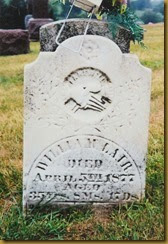
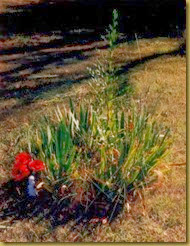
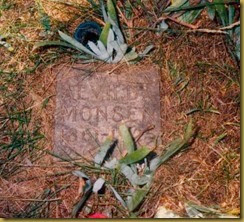
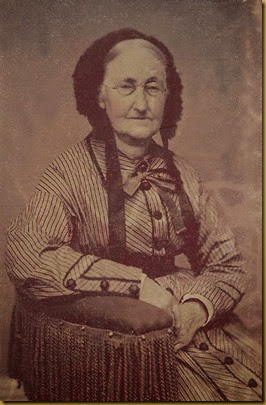
![VBChurch1883[3] VBChurch1883[3]](http://lh6.ggpht.com/-fDB69twjamk/Uyz7gAdlHXI/AAAAAAAADWo/pdLLNVwqnz4/VBChurch1883%25255B3%25255D_thumb.jpg?imgmax=800)
![VBChurch1209[2] VBChurch1209[2]](http://lh4.ggpht.com/-f7zdvh4VbXM/Uyz7h7ZQkHI/AAAAAAAADW0/McJsx8X-XZM/VBChurch1209%25255B2%25255D_thumb%25255B2%25255D.jpg?imgmax=800)
![VBChurch_1213[2] VBChurch_1213[2]](http://lh5.ggpht.com/-d4wm0XouHUg/Uyz7i_9dYaI/AAAAAAAADXI/JrP8oGJM2e8/VBChurch_1213%25255B2%25255D_thumb%25255B1%25255D.jpg?imgmax=800)
![VBChurch[5] VBChurch[5]](http://lh3.ggpht.com/-1p484tWup-8/Uyz7kE8KFII/AAAAAAAADXY/bSvBNaBL2R4/VBChurch%25255B5%25255D_thumb.jpg?imgmax=800)